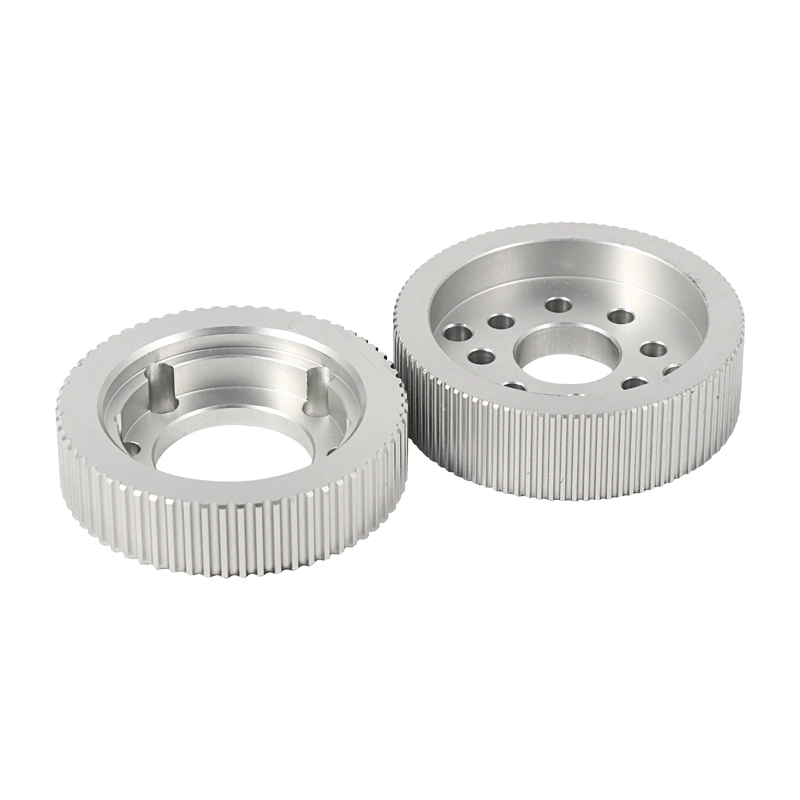```html
HTD Pulley in Industrial Machinery
Introduction to HTD Pulleys
HTD (High Torque Drive) pulleys are a critical component in industrial machinery. These pulleys are designed to transmit torque with high efficiency and precision. They are often used in applications where timing and synchronization are crucial.
Historical Development of HTD Pulleys
The evolution of HTD pulleys dates back to the need for more efficient power transmission systems. Earlier belt systems had limitations in terms of slippage and wear. The introduction of HTD pulleys revolutionized the industry by providing a more reliable and durable solution.
Material Composition
HTD pulleys are typically made from high-strength metals such as steel or aluminum. These materials offer excellent durability and resistance to wear and tear. Some variations may also use engineered plastics for specific applications where weight reduction is a priority.
Design Specifications
Designing an HTD pulley involves precise engineering. The pitch, width, and number of teeth are carefully calculated to ensure optimal performance. Advanced CAD software is often used to create detailed designs before manufacturing.
Manufacturing Process
The manufacturing of HTD pulleys involves several stages, including material selection, machining, and quality control. Each stage is crucial to ensure the final product meets stringent industry standards. CNC machines play a significant role in the precision manufacturing of these components.
Applications in Industrial Machinery
HTD pulleys are widely used in various types of industrial machinery. They are essential in systems where accurate timing and synchronization are required, such as conveyor systems, printing machines, and automated assembly lines.

Comparison with Other Pulley Types
When compared to other pulley types such as V-belt or flat-belt pulleys, HTD pulleys offer superior torque transmission and reduced slippage. This makes them a preferred choice in high-performance industrial applications.
Performance Metrics
Key performance metrics for HTD pulleys include torque transmission efficiency, operational lifespan, and maintenance requirements. These metrics are crucial for determining the suitability of HTD pulleys for specific industrial applications.
Installation Guidelines
Proper installation of HTD pulleys is critical for optimal performance. This includes ensuring correct alignment, tensioning, and lubrication. Following manufacturer guidelines can significantly extend the lifespan of the pulley system.
Maintenance Practices
Regular maintenance is essential to keep HTD pulleys in optimal working condition. This includes periodic inspections for wear, lubrication checks, and replacing worn-out components. Proactive maintenance can prevent costly downtime.
Common Issues and Troubleshooting
Despite their robustness, HTD pulleys can encounter issues such as misalignment, wear, and slippage. Identifying and addressing these issues promptly can prevent more severe problems and extend the system's operational life.
Cost Considerations
The cost of HTD pulleys can vary based on material, size, and manufacturing complexity. While they may be more expensive than other pulley types, their superior performance and longevity often justify the investment.
Environmental Impact
HTD pulleys are designed for efficiency, which can help reduce energy consumption in industrial applications. Additionally, advancements in manufacturing processes have made it possible to produce these components with a lower environmental footprint.

Future Trends
The future of HTD pulleys looks promising, with ongoing research into new materials and manufacturing techniques. Innovations such as 3D printing and advanced composites are expected to further enhance the performance and applicability of HTD pulleys.
Case Studies
Several case studies highlight the successful implementation of HTD pulleys in various industries. These studies provide valuable insights into the challenges and benefits of using HTD pulleys in real-world applications.
Industry Standards and Certifications
HTD pulleys must comply with industry standards and certifications to ensure quality and reliability. Certifications such as ISO and ANSI provide a benchmark for manufacturers and users alike.
Custom Solutions
Many manufacturers offer custom HTD pulley solutions tailored to specific industrial needs. Customization options include material selection, design specifications, and performance enhancements.
Vendor Selection Criteria
Choosing the right vendor for HTD pulleys involves considering factors such as product quality, pricing, and after-sales support. Reputable vendors often provide comprehensive warranties and technical support.
Global Market Overview
The global market for HTD pulleys is expanding, driven by the growing demand for efficient power transmission solutions. Key markets include automotive, manufacturing, and aerospace industries.
Technological Advancements
Technological advancements are continually improving the performance and reliability of HTD pulleys. Innovations such as intelligent monitoring systems and predictive maintenance are set to revolutionize the industry.
Regulatory Compliance
Compliance with regulatory requirements is essential for the manufacturing and use of HTD pulleys. Regulations often cover aspects such as safety, environmental impact, and quality assurance.
Integration with Automation Systems
HTD pulleys are increasingly being integrated with automation systems to enhance efficiency and productivity. These integrations often involve the use of sensors and control systems to monitor and optimize performance.
Impact of Digital Transformation
Digital transformation is reshaping the industrial landscape, and HTD pulleys are no exception. The use of digital tools for design, manufacturing, and maintenance is driving improvements in efficiency and reliability.
Customer Testimonials
Customer testimonials highlight the benefits of using HTD pulleys in various applications. Positive feedback often focuses on the pulleys' reliability, performance, and ease of maintenance.
Conclusion
HTD pulleys play a vital role in modern industrial machinery, offering superior performance and reliability. As technology continues to advance, these components will remain integral to efficient power transmission systems.
Promoting Our Company¡¯s Products

Our company is a leading player in the Chinese pulley market. Our product range includes HTD pulleys, plastic pulleys, timing pulleys, belt idler pulleys, belt pulleys, V pulleys, compound pulleys, and heavy-duty pulleys. With over 300 sets of fully automated CNC production equipment and fully automated assembly equipment, we ensure high-quality products at competitive prices. Our excellent customer service ensures that clients can customize products based on their specific requirements. Welcome to come with drawings or samples for customization.
```